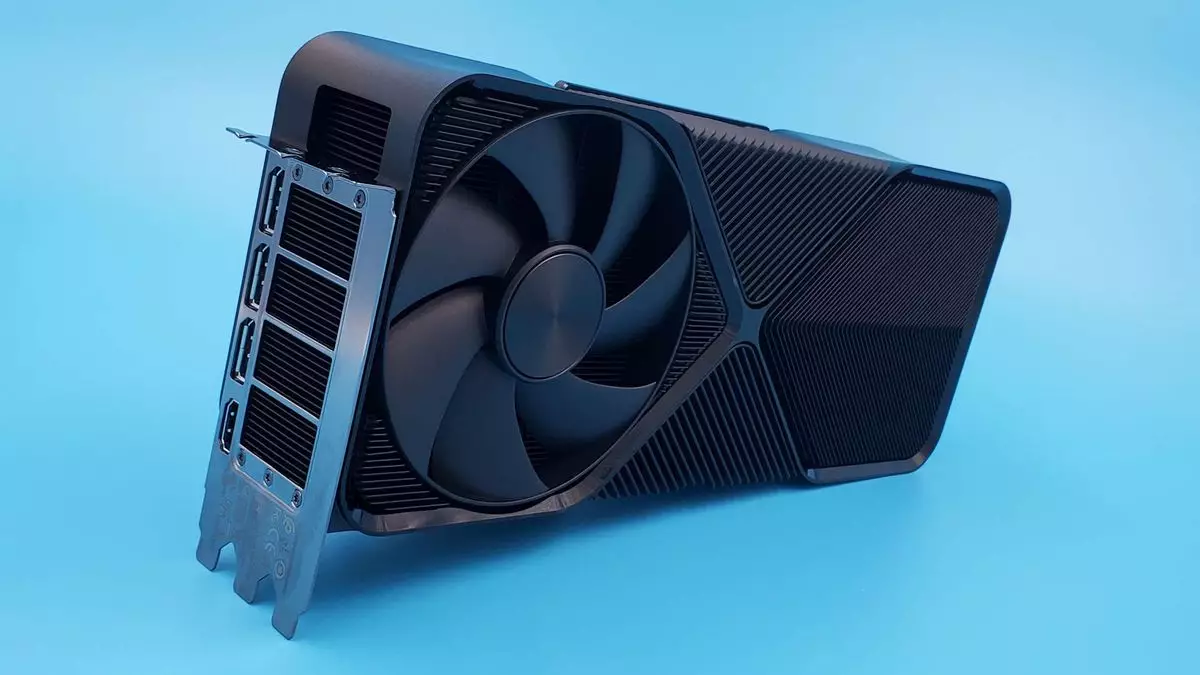As technology continually advances, the gaming industry finds itself at the intersection of cutting-edge graphics and artificial intelligence (AI). The recent buzz surrounding Nvidia’s anticipated RTX 5090 GPU has spurred discussions about a radical shift towards fully AI-rendered graphics. This article aims to explore the implications, challenges, and future potential of this groundbreaking technology in gaming.
The gaming community is abuzz with speculation regarding Nvidia’s plans to integrate profound AI advancements into its graphics processing unit (GPU) technology. While the RTX 5090 GPU is expected to be a remarkable improvement over its predecessors, the underlying shift towards AI-rendered graphics is what is creating waves. Unlike traditional 3D rendering techniques that heavily rely on complex algorithms to create lifelike visuals, neural networks promise to redefine the process entirely.
Imagine a scenario where a game engine communicates essential data about objects in a scene—how they move, their textures, and environment interactions—directly to an AI system. This innovative approach could fundamentally alter the way games are developed and rendered, shifting the responsibility of pixel generation from GPU-centric pipelines to intelligent algorithm-driven techniques.
As the industry looks towards 2025 and Nvidia’s expected unveiling of the Blackwell architecture at CES, excitement about this potential leap in GPU technology mounts. While detailed features remain undisclosed, reports hint that the next-generation graphics cards may incorporate enhanced AI capabilities, including improved ray tracing, generative AI acceleration, and profound integration of AI in both gaming and content creation.
A noteworthy indicator of this trend can be found in comments from an industry insider linked to INNO3D, who mentioned anticipating a different class of graphics cards. Although vague, terms like “neural rendering capabilities” imply that Nvidia aims to take its current capabilities further by providing gaming and media production solutions that are more intuitive, requiring less manual input and offering greater automation.
It’s crucial to differentiate between marketing jargon and genuine technological advances. Nvidia has long touted AI’s potential, yet the term ‘neural rendering’ brings an element of curiosity—what does it truly mean for the average gamer? Presently, Nvidia has positioned its DLSS and generative AI functionalities to enhance frame rates and visual quality. Nevertheless, the idea of rendering every pixel through AI, while enticing, raises several questions about feasibility and application.
For reference, Nvidia’s vice president, Bryan Catanzaro, previously communicated that the capacity for real-time neural rendering existed but was limited in quality. While the pursuit of achieving high-quality graphics entirely through neural networks is promising, pressing challenges remain in striking a balance between speed, performance, and visual fidelity.
The idea of distributing the rendering workload between traditional pipelines and AI is gaining traction. This hybrid approach could yield more visually rich experiences while retaining the performance advantages gamers have come to expect. By incorporating specific discrete elements that are AI-managed—such as real-time radiance caching—the gap between traditional techniques and neural rendering may gradually close.
If Nvidia successfully implements advanced neural rendering technologies, the implications could resonate far beyond graphics. Game developers might find themselves liberated from the demands of intricate 3D designs and could instead focus on storytelling, character development, and innovative gameplay. This paradigm shift might democratize game development, allowing indie developers to produce high-quality experiences without the hefty budget of traditional studios.
Furthermore, the content creation landscape could see similar transformations. As AI-rendered graphics become more mainstream, streamers and content creators may benefit from enhanced quality in their videos, reducing the resource intensity of production while maximizing aesthetic appeal.
While the prospect of fully AI-rendered graphics via Nvidia’s RTX 50-series may still reside in the realm of aspirational tech, it is undeniable that the future is bright with possibilities. As we await further developments from Nvidia, it becomes vital for the gaming community to remain optimistic yet cautiously realistic about the trajectory of AI technologies in gaming.
The movement toward AI-enhanced graphical rendering is not merely a trend; it represents the core of an evolving industry at the crossroads of immersive storytelling and technological innovation. As we embark on this new chapter in gaming, the integration of AI promises to redefine not just how games are rendered but how they are experienced.

